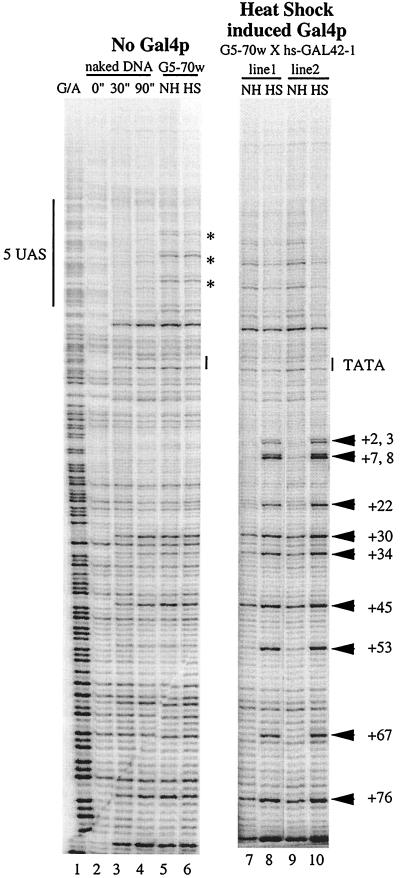FIG. 2.
Recruitment of polymerase by heat shock-inducible Gal4p. The pattern of G/A cleavage is shown (lane 1); the pattern of permanganate reactivity was assessed for protein-free DNA (lanes 2 through 4) and for salivary glands from larvae that lacked Gal4p (lanes 5 and 6) or contained a heat shock-inducible Gal4p (lanes 7 through 10). The designations line 1 and line 2 refer to two separate fly lines that carry the same target construct in different locations in the genome. Samples in lanes 5 and 6 provide a control for the effects of heat shock in the absence of the heat shock-inducible Gal4p gene. Samples in lanes 7 and 9 were derived from larvae that had not been subjected to heat shock;consequently, they did not express Gal4p. Samples in lanes 8 and 10 were derived from the larvae that had been subjected to a 30-min heat shock and were then allowed to recover from heat shock for 1 h. During this time, Gal4p was expressed and induced expression of the target gene. The numbers identify thymines on the nontranscribed strand located downstream from the transcription start site. The label “5 UAS” indicates the Gal4p binding sites, and the TATA box is also shown. Asterisks indicate nucleotides at which decreased permanganate reactivity was observed. NH, non-heat-shocked larvae; HS, heat-shocked larvae.

